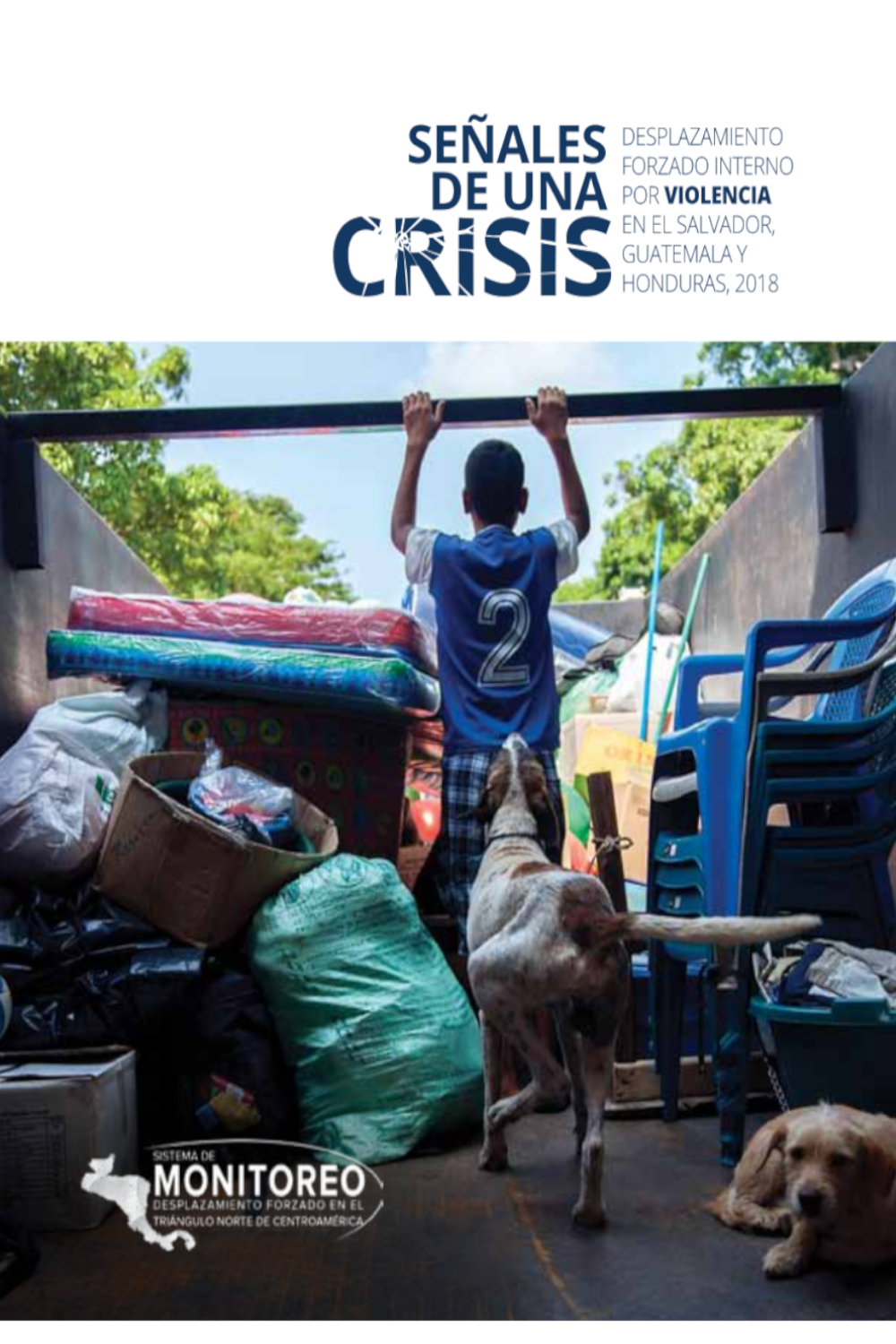
SIGNS OF A CRISIS


In recent years, Cristosal has worked in Central America in the monitoring and investigation of the phenomenon of internal displacement caused by generalized violence in the region from a human rights-based approach, that is, identifying gaps and omissions from the States as holders of obligations in regards to human rights. Using this approach, Cristosal has monitored the phenomenon jointly with different state and non-state organizations, taking existing international instruments as the main frame of reference, such as the United Nations Guiding Principles on Internal Displacement. These principles establish minimum standards to consider when generating proposals for policies, procedures, and application guides from state agencies to guarantee care and protection for victims of violence who are facing internal displacement. Thus, the different reports published on the subject have tried to characterize the phenomenon, focusing on showing the victims who suffer from this condition and how serious of a violation of human rights it is to officially ignore this phenomenon, minimizing it or avoiding the responsibility of providing prompt, effective, efficient, and comprehensive solutions. In this sense, the lack of action, the omission by the States also constitutes a serious violation of human rights against the victims, causing even greater damage to those who are already in a situation of vulnerability. This report includes statistics and analysis of cases registered directly by Cristosal and organizations that work in the care, assistance, and protection of victims in El Salvador and Honduras (1,946 people in 2018). In addition, the report now includes records, numbers, and analysis of Honduras and Guatemala in an effort to provide a regional vision on forced displacement, demonstrating that the issue is an effect and not a cause.
The articulation of different non-governmental, governmental, and academic actors is found in the Regional Monitoring System on internal displacement (www.enfoca.org), an initiative that, through approved instruments and tools, seeks to provide accurate and updated information accessible to all entities interested in understanding the phenomenon and activating mechanisms in favor of internally displaced persons. Currently, the Regional Monitoring System in El Salvador connects Plan Internacional, EDUCO (who provided data for this study), Doctors without Borders, the Ministry of Health, and Save the Children. In Honduras, the System connects Casa Alianza (who provided data for this report), DINAF, and Municipality of El Progreso with data provided by CIPRODEH and Pastoral de la Movilidad Humana. In Guatemala, the System connects Pop No’j Association, Fe y Alegría, and the Human Rights Ombudsman of Guatemala (PDH). At the regional level, the following institutions participate: IDMC, IOM, Crime Stoppers, and Fundación Cristosal. Likewise, when addressing factors causing internal displacement, the team has carried out its work based on the international monitoring practice of the Internal Displacement Monitoring Center (IDMC), which defines profiles, drivers, triggers, and impacts, a similar approach to violence prevention.
The application of the approach has required systematic collection and analysis of information usually applied in early warning systems in order to anticipate scenarios and escalation of conflicts, develop strategic responses to crises, and present options to critical actors for decision making. This monitoring works with indicators of a structural type, drivers (events that are fed back and rapidly increase the degree of importance, circumstances with a higher degree of volatility), which can also express the decomposition of the system or fundamental changes and the so-called triggers, that is, immediate events that accelerate the outbreak of a crisis or conflict.
There is still a long way to go to achieve a regional analysis of the phenomenon of forced displacement due to generalized violence in Central America. The state institutions in charge of assisting victims of violence in conditions of internal displacement have not made progress or the effort has been insufficient to have unique registries in their respective countries that allow an adequate characterization. There is still a lack of adequate data recording, without which it is difficult to have an appropriate diagnosis and therefore correct approaches and responses. Civil society organizations can support the care and protection of victims, but they not be forced to undertake that responsibility; it is the States responsibility.
This mandate must be guaranteed at four levels: prevention, humanitarian aid, relocations, and long-lasting solutions. In order to create evidence in the countries of the subregion, the Regional System for Monitoring Internal Displacement due to Generalized Violence was established. This System seeks to document and disseminate information on the scope and causes of internal displacement due to generalized violence in Central America. It emphasizes the importance of data collection and offers demographic information and information on access to rights of the internally displaced population due to generalized violence to facilitate the design of proposals about policies and programs that effectively meet the needs of displaced persons and protect their rights within the applicable legal frameworks. In each country, the level of institutional recognition and knowledge of internal displacement and of the groups in this condition is different, not only regarding the national framework, but also regarding the local and community framework. Correcting this deficiency should be a priority task for each state entity to which the victims of violence in conditions of internal displacement resort every day to ask for help with no success or having this help be provided in a biased, and, definitely, insufficient way.
INFOGRAPHIC: SIGNS OF A CRISIS
INFOGRAPHIC (ES): SIGNS OF A CRISIS



Portal de monitoreo a vulneraciones de derechos humanos
El equipo de investigación de Cristosal brinda monitoreo constante a las violaciones en materia de derechos humanos, para brindar información oportuna y certera sobre las causas y efectos de estas sobre las poblaciones vulneradas. Alimentado por datos provenientes de instituciones Estatales, de sociedad civil y de cooperación internacional, sus publicaciones fortalecen la labor de defensa y promoción de los derechos humanos en el Norte de Centroamérica.